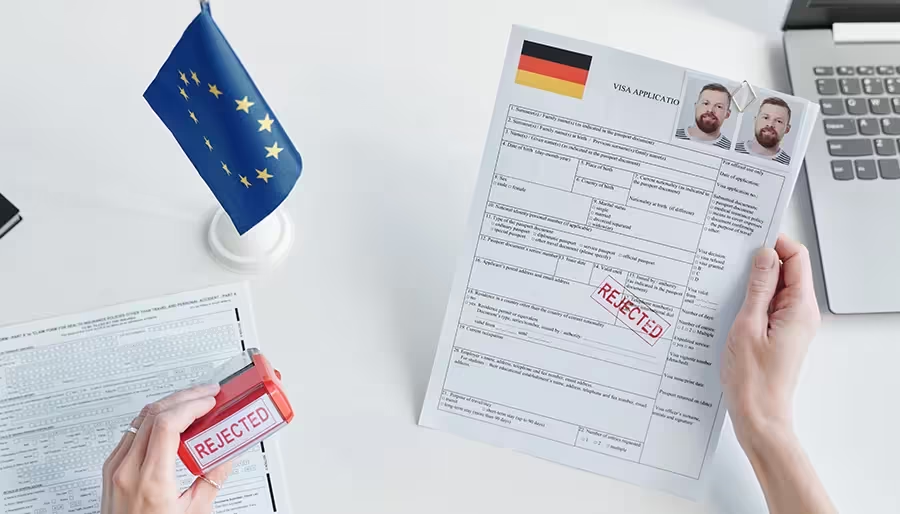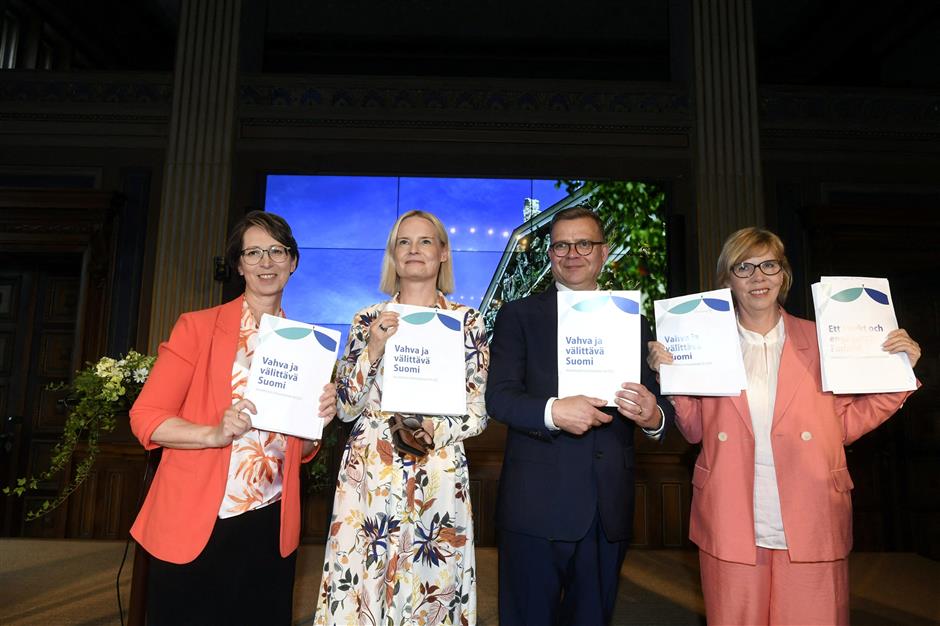The Schengen Area, comprising 29 European countries that have abolished internal border controls, represents a coveted destination for travelers worldwide, offering access to a diverse tapestry of cultures, histories, and landscapes. For many, particularly from countries like Nigeria, securing a Schengen visa is a critical step toward realizing aspirations of education, business, tourism, or family reunification in Europe. However, the visa application process is often fraught with challenges, as evidenced by the European Commission’s 2024 data, which reported a rejection rate of 14.8% across 11.7 million applications. This translates to 1.7 million rejections, underscoring the increasing stringency of Schengen visa policies. This article delves into the top 10 Schengen countries with the highest visa rejection rates in 2024, explores the underlying reasons for these rejections, and provides insights into navigating the complex visa application landscape. Through an in-depth analysis, we aim to uncover hidden truths, examine relevant research, and offer practical guidance for prospective applicants.
Overview of Schengen Visa Applications in 2024In 2024, Schengen states processed 11.7 million short-stay visa applications, a 13.6% increase from the 10.3 million applications in 2023, though still below the pre-pandemic peak of 17 million in 2019. Of these, 9.7 million visas were issued, reflecting an 84.14% approval rate, while 1.7 million applications were rejected, resulting in a 14.8% rejection rate. This upward trend in rejections, compared to the global average of 17.5% in 2022, highlights a tightening of visa policies across the Schengen Area. The financial implications are significant, with rejected applications generating €136.5 million in non-refundable fees, a burden disproportionately borne by applicants from African and Asian countries. These statistics, compiled by the European Commission, provide a foundation for understanding the challenges faced by applicants, particularly from regions with historically high rejection rates. The data also reveals disparities in rejection rates among Schengen countries, influenced by factors such as application volume, national policies, and geopolitical considerations. Understanding these dynamics is crucial for applicants aiming to maximize their chances of success.
The following sections detail the 10 Schengen countries with the highest visa rejection rates in 2024, based on European Commission data. Each country’s rejection rate, application volume, and reasons for denials are explored, alongside insights into their visa processing systems.
1. Malta – 38.5% Rejection RateMalta, a small Mediterranean island nation, topped the list with a staggering 38.5% rejection rate, denying 16,905 out of 45,578 applications in 2024. Despite its relatively low application volume compared to larger Schengen states like France or Germany, Malta’s stringent evaluation process results in nearly four out of ten applicants being refused. The high rejection rate may be attributed to Malta’s cautious approach to immigration, driven by its small size and concerns about overstays or irregular migration. Applicants often face rejections due to incomplete documentation, insufficient financial proof, or unclear travel purposes. Malta’s visa policies reflect a broader trend among smaller Schengen states, which may prioritize security and compliance over high approval rates. For Nigerian applicants, who face a global rejection rate of 45.9%, applying through Malta requires meticulous preparation to meet its rigorous standards.
[](https://nairametrics.com/2025/05/21/nigeria-records-45-9-schengen-visa-rejection-rate-in-2024-third-highest-globally/)“Malta’s high rejection rate underscores the challenges faced by applicants from high-risk countries, where economic disparities and weak passport power exacerbate scrutiny.” – Migration Scholar, Henley & Partners[](https://www.henleyglobal.com/publications/africa-wealth-report-2024/comparing-visa-rejection-rate-africans-versus-world)2. Estonia – 27.2% Rejection Rate
Estonia, a Baltic nation, recorded a 27.2% rejection rate, denying 3,291 out of 12,125 applications. Despite its small application volume, Estonia’s strict criteria reflect a meticulous evaluation process, often focusing on the applicant’s ties to their home country and the credibility of their travel itinerary. Rejections commonly stem from inadequate proof of financial means or failure to demonstrate a clear purpose for the visit. Estonia’s high rejection rate may also be influenced by its role as a less prominent entry point to the Schengen Area, leading to heightened scrutiny to prevent misuse of visas. Applicants targeting Estonia should prioritize comprehensive documentation, including detailed travel plans and evidence of strong ties to their home country, such as employment or property ownership.
Belgium, a central hub for international diplomacy, rejected 61,000 out of 255,564 applications, resulting in a 24.6% rejection rate. The country’s rigorous standards are driven by its strategic importance and high application volume. Common reasons for rejection include errors in application forms, insufficient financial proof, or lack of compelling ties to the applicant’s home country. Belgium’s thorough vetting process is designed to mitigate risks of overstays, particularly from applicants from regions like Africa, where rejection rates are disproportionately high. For Nigerian applicants, ensuring error-free documentation and robust financial evidence is critical when applying through Belgium.
Slovenia, another smaller Schengen member, rejected 4,417 out of 18,171 applications, yielding a 24.5% rejection rate. Despite its picturesque landscapes and growing popularity as a tourist destination, Slovenia maintains strict visa policies, often rejecting applications due to incomplete travel plans or insufficient proof of intent to return. The country’s relatively low application volume allows for detailed scrutiny, contributing to its high rejection rate. Applicants should provide detailed itineraries and strong evidence of ties to their home country to improve their chances of approval.
Sweden, known for its thorough evaluation process, rejected 44,576 out of 188,623 applications, resulting in a 24% rejection rate. Despite its appeal as a tourist and study destination, Sweden’s stringent requirements, particularly regarding financial proof and invitation letters, lead to frequent rejections. The country’s meticulous approach reflects its commitment to maintaining high security standards within the Schengen Area. Applicants targeting Sweden should ensure their submissions include comprehensive financial documentation and clear evidence of their travel purpose.
Denmark denied 31,000 out of 132,158 applications, with a 23.7% rejection rate. The country’s strict adherence to Schengen rules emphasizes the need for robust invitation letters and financial proof. Rejections often occur when applicants fail to provide sufficient evidence of their intent to return or when their travel plans lack clarity. Danish authorities prioritize applications with well-documented purposes, making thorough preparation essential.
As a newer Schengen member, Croatia rejected 8,003 out of 42,165 applications, resulting in a 19.3% rejection rate. Despite its emerging status, Croatia applies rigorous standards consistent with other Schengen states, focusing on documentation accuracy and financial stability. Applicants face rejections due to incomplete submissions or inadequate proof of ties to their home country. Croatia’s integration into the Schengen Area has not softened its visa policies, making careful application preparation crucial.
Poland rejected over 19,000 applications, with a 17.2% rejection rate. Despite an increase in application volume, many submissions fail to meet compliance standards, particularly regarding documentation accuracy. Poland’s growing popularity among international students and tourists has not translated into leniency, as authorities maintain strict evaluation criteria. Applicants should focus on providing complete and accurate documentation to avoid rejection.
France, a top destination with over 3 million applications, rejected nearly 500,000, resulting in a 15.8% rejection rate. The sheer volume of applications contributes to the high number of rejections, with common issues including incomplete documentation and failure to meet financial requirements. France’s popularity as a cultural and educational hub makes it a challenging but sought-after visa destination. Applicants must adhere strictly to France’s requirements, ensuring all documents are meticulously prepared.
Matching France’s rejection rate, the Czech Republic denied 23,735 out of 150,629 applications. Rejections often result from incomplete travel plans or insufficient financial proof. The country’s rich history and cultural appeal attract many applicants, but its rigorous evaluation process demands detailed itineraries and strong evidence of intent to return. Thorough preparation is key to securing a Czech Schengen visa.
Beyond the top 10, several major Schengen countries reported significant rejection rates in 2024, reflecting diverse challenges for applicants.
Germany – 13.7% Rejection RateGermany processed approximately 1.5 million applications, rejecting 206,733, resulting in a 13.7% rejection rate. Known for its efficiency and strict regulations, Germany requires meticulous documentation, with rejections often stemming from inadequate financial proof or unclear travel purposes. Applicants targeting Germany should prioritize comprehensive documentation to meet its exacting standards.
Italy, a dream destination for millions, received 1.2 million applications and rejected 134,303, yielding a 10.9% rejection rate. Despite its relatively low rejection rate compared to others, Italy’s high application volume necessitates thorough preparation to avoid delays or denials. Applicants should ensure their submissions include detailed travel plans and robust financial evidence.
Spain, another popular destination, rejected 244,432 applications, resulting in a 15.7% rejection rate. The country’s appeal as a tourist and study destination drives high application volumes, but strict documentation requirements lead to frequent rejections. Applicants must provide error-free documentation and clear evidence of their intent to return.
Iceland stood out with one of the lowest rejection rates at 6.6%, making it a favorable destination for visa applicants. Its efficient processing system and transparent guidelines contribute to a high approval rate, provided applicants meet the necessary criteria. Iceland’s low rejection rate offers a strategic option for applicants seeking a smoother visa process.
Understanding the reasons behind visa rejections is critical for applicants aiming to improve their chances of success. Common reasons include:
Incomplete or Inaccurate Documentation: Missing or incorrect documents, such as travel itineraries, invitation letters, or financial statements, are a leading cause of rejections across Schengen countries. Applicants must ensure all required documents are complete and accurate.
Insufficient Financial Means: Applicants must demonstrate sufficient funds to cover their stay in the Schengen Area. Failure to provide bank statements or proof of financial stability often leads to rejection.
Lack of Ties to Home Country: Consulates assess whether applicants are likely to return home after their visit. Lack of evidence, such as employment contracts, property ownership, or family ties, increases the risk of rejection.
Unclear Purpose of Travel: Vague or inconsistent travel plans can raise suspicions about the applicant’s intentions, leading to denials. Detailed itineraries and clear purposes are essential.
Previous Immigration Violations: A history of overstays or other immigration issues can significantly impact future applications.
Security or Health Concerns: Applicants with criminal records or health issues posing a risk may face rejections.
“The Schengen visa regime allows immigration officials to filter applicants based on economic conditions and country of origin, disproportionately affecting those from poorer nations.” – Mehari Taddele Maru, Migration ScholarAfrican applicants, particularly from countries like Nigeria, face significantly higher rejection rates than the global average. In 2024, Nigeria recorded a 45.9% rejection rate, the third-highest globally, following Bangladesh (54.9%) and Pakistan. This disparity is driven by several factors, including economic conditions, weak passport power, and perceived risks of irregular migration. Research by Henley & Partners highlights that African countries accounted for six of the top 10 countries with the highest rejection rates in 2023, with Algeria, Guinea-Bissau, and Nigeria leading the list. The correlation between low national income, weak passport power, and high rejection rates underscores systemic barriers faced by African applicants.
The European visa regime’s stringent approach toward African applicants raises questions about fairness and its impact on EU-Africa relations. Despite the EU’s stated commitment to strengthening partnerships with Africa, high rejection rates and non-refunded fees (totaling €130 million in 2023) create financial and emotional burdens for applicants. These policies may undermine trust and cooperation, particularly as African governments seek reciprocal mobility arrangements.
Navigating the Schengen visa process requires strategic preparation. Based on insights from experts and official guidelines, applicants can enhance their chances of approval through the following steps:
Choose the Right Country: Apply through countries with lower rejection rates, such as Iceland (6.6%), Latvia (11.7%), or Switzerland (10.7%). These nations have efficient processing systems and more lenient criteria.
Prepare Thorough Documentation: Ensure all required documents, including a valid passport, travel insurance, financial statements, and invitation letters, are complete and accurate. Double-checking for errors can prevent unnecessary rejections.
Demonstrate Strong Ties: Provide evidence of employment, property ownership, or family responsibilities to prove intent to return.
Secure Schengen-Compliant Insurance: Purchase travel insurance covering medical emergencies and repatriation, as required by Schengen regulations.
Plan a Detailed Itinerary: Submit a clear travel plan outlining accommodation, travel dates, and purposes to avoid suspicion of unclear intentions.
Apply Early: Submit applications at least three months before travel to account for processing times, which can vary from 48 hours to 15 working days, especially during peak seasons.
“A well-prepared application, with clear documentation and a compelling case for return, significantly improves approval chances, even in countries with high rejection rates.” – Travel Expert, AtlysThe Schengen visa system reflects broader trends in global mobility, where economic disparities and passport power dictate access to international travel. The Henley Passport Index, which ranks passports based on visa-free access, reveals that African nations consistently rank low, exacerbating visa challenges. For instance, Nigeria’s passport ranks among the weakest, with limited visa-free access, contributing to its high rejection rate. This systemic inequality highlights the need for policy reforms to facilitate legal mobility, particularly for applicants from the Global South.
The financial burden of rejected applications, coupled with the emotional toll, underscores the urgency of addressing visa biases. The EU’s planned introduction of the European Travel Information and Authorisation System (ETIAS) by mid-2025 will further complicate travel for visa-free travelers, while the Entry/Exit System (EES) aims to enhance border control efficiency. These developments suggest a continued focus on security, potentially at the expense of accessibility for applicants from high-risk countries.
The 2024 Schengen visa rejection rates reveal a complex landscape where applicants, particularly from African nations like Nigeria, face significant hurdles. Malta’s 38.5% rejection rate, followed by Estonia, Belgium, and others, underscores the stringent standards applied across the Schengen Area. While countries like Iceland offer higher approval prospects, success hinges on meticulous preparation, including complete documentation, robust financial proof, and clear travel purposes. By understanding the reasons for rejections and adopting strategic approaches, applicants can navigate this challenging process more effectively. The broader implications of high rejection rates, particularly for African applicants, highlight the need for fairer visa policies to foster equitable global mobility. As the Schengen Area evolves with new systems like ETIAS and EES, applicants must stay informed and proactive to achieve their European travel aspirations.
[](https://nairametrics.com/2025/05/21/nigeria-records-45-9-schengen-visa-rejection-rate-in-2024-third-highest-globally/)[](https://travelobiz.com/easiest-schengen-visas-in-2025-countries-with-the-lowest-rejection-rates/)



















0 Comments